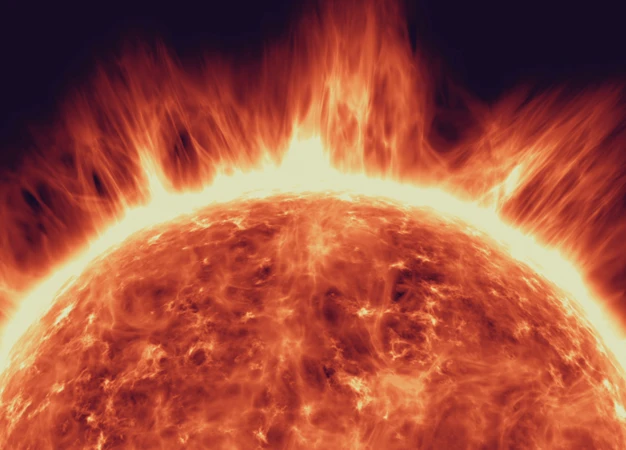The Role of Planetary Alignments in Predicting Natural Disasters: Unveiling the Mysteries of the Universe
Imagine being able to predict natural disasters before they strike, offering valuable time to prepare and potentially save countless lives. While it may seem like something out of a science fiction movie, the concept of using planetary alignments to forecast these catastrophic events has piqued the curiosity of scientists and meteorologists around the world. In this article, we will explore the science behind these alignments, the methods used to predict natural disasters, examine intriguing case studies, acknowledge the challenges and limitations, and delve into the future possibilities of harnessing the power of planetary alignments for accurate disaster predictions. Prepare to embark on a journey where ancient observations and cutting-edge technology collide, offering a glimmer of hope in the world of disaster preparedness.
Contents
- The Science behind Planetary Alignments
- Methods of Predicting Natural Disasters
- Case Studies: Planetary Alignments and Natural Disasters
- Challenges and Limitations
- The Future of Planetary Alignments in Disaster Prediction
- Conclusion
- Frequently Asked Questions
- References
-
Frequently Asked Questions
- FAQ 1: Can planetary alignments accurately predict natural disasters?
- FAQ 2: How far back do historical observations of planetary alignments go?
- FAQ 3: Are there gravitational effects on Earth during planetary alignments?
- FAQ 4: What is the astrological methodology used in predicting natural disasters?
- FAQ 5: What are alignment tracking systems?
- FAQ 6: Did planetary alignments play a role in Hurricane Katrina?
- FAQ 7: Was the Japan earthquake and tsunami related to planetary alignments?
- FAQ 8: Can inaccuracies and uncertainties arise when using planetary alignments for disaster prediction?
- FAQ 9: What are some limitations of using planetary alignments in disaster prediction?
- FAQ 10: How can advancements in technology contribute to the future of planetary alignments in disaster prediction?
- References
- Read More
The Science behind Planetary Alignments
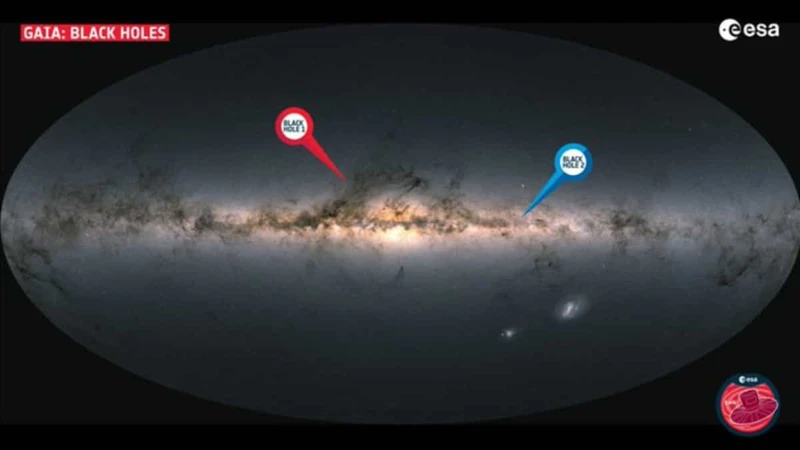
The Science behind Planetary Alignments
Historical Observations of Planetary Alignments: Ancient civilizations, such as the Mayans and the Egyptians, have long been fascinated by the movements of celestial bodies. Through meticulous observations, these early astronomers documented the occurrence of planetary alignments – moments when multiple planets appear to line up in the sky. While these observations were initially made without the aid of modern technology, they provided a foundation for understanding the intricate relationship between the planets and their potential impact on Earth.
Gravitational Effects on Earth: One key aspect of planetary alignments is their gravitational influence on Earth. The gravitational pull exerted by planets affects the Earth’s tides, causing variations in sea levels. This gravitational force is strongest when several massive planets align, amplifying its impact. It is believed that these gravitational interactions between celestial bodies may trigger geological and atmospheric disturbances, potentially leading to natural disasters like earthquakes and hurricanes.
Correlation with Natural Disasters: Although the exact mechanisms linking planetary alignments to natural disasters are not yet fully understood, there is evidence to suggest a correlation. Some researchers propose that when planets align, their combined gravitational forces create additional stress on the Earth’s tectonic plates, enhancing the likelihood of seismic activity. Similarly, the gravitational effects on the atmosphere during alignments may interfere with weather patterns, potentially intensifying storms or altering their trajectory. However, it is important to note that the correlation between planetary alignments and natural disasters is still a topic of debate within the scientific community, with some experts attributing these alignments to mere coincidence.
Understanding the science behind planetary alignments is crucial in exploring their potential role in predicting natural disasters. By comprehending the historical observations, gravitational effects, and the correlation with natural disasters, scientists and researchers can continue to delve deeper into this fascinating field, aiming to unravel the mysteries of the universe and potentially save lives through accurate disaster forecasting.
1. Historical Observations of Planetary Alignments
Ancient civilizations across the globe were captivated by the celestial dance of the planets. They meticulously observed the night sky, noting the rare occurrences when planets aligned. Some of the earliest records of planetary alignments can be traced back to the Mayans, who created intricate astronomical calendars based on their observations. These ancient astronomers believed that planetary alignments held significant spiritual and cosmic significance. They associated specific alignments with prophecies, predictions, and even the fate of civilizations. The Egyptians also made noteworthy observations, utilizing the alignment of certain planets with the sun to understand and predict natural phenomena. While these civilizations lacked the technology we have today, they possessed a deep understanding of the celestial movements and their potential impact on Earth. These historical observations laid the foundation for future investigations into planetary alignments and their role in predicting natural disasters.
2. Gravitational Effects on Earth
Gravitational Effects on Earth
The gravitational effects of planetary alignments play a significant role in understanding their potential impact on Earth. Gravity is a fundamental force that governs the motion of celestial bodies, and when multiple planets align, their combined gravitational pull can exert additional forces on our planet. The influence of these alignments can be observed in various ways.
Tidal Effects: One of the most noticeable consequences of gravitational forces is the effect on tides. The Moon’s gravitational pull is primarily responsible for the Earth’s tides, but when planets align, their gravitational forces can enhance or modify these tidal patterns. High tides may be more extreme, while low tides may experience a deepening effect. This phenomenon can be especially pronounced when large planets like Jupiter or Saturn are involved in an alignment.
Stress on Tectonic Plates: The Earth’s lithosphere is composed of several moving tectonic plates that interact with each other. During planetary alignments, the gravitational forces exerted by the aligned planets can induce additional stress on these plates. This increased stress can potentially lead to a release of energy in the form of earthquakes or volcanic activity. While the direct correlation between planetary alignments and seismic events is still being studied, many researchers believe that these alignments can contribute to the triggering of such geological phenomena.
Atmospheric Interactions: Apart from affecting the Earth’s lithosphere, planetary alignments can also influence the atmosphere. The gravitational pull of aligned planets can perturb the movement of air masses and alter weather patterns. This can result in atmospheric disturbances, such as the intensification of storms or the redirection of their paths. While the exact mechanisms are not fully understood, some studies suggest a potential link between planetary alignments and the occurrence of extreme weather events.
Understanding the gravitational effects of planetary alignments is crucial in assessing their potential impact on Earth’s natural systems. By studying the tidal effects, stress on tectonic plates, and atmospheric interactions, scientists can gain insights into how these alignments might contribute to the occurrence of natural disasters. However, it is important to note that while the gravitational effects are significant, they are just one piece of the complex puzzle that encompasses the prediction of natural disasters.
3. Correlation with Natural Disasters
3. Correlation with Natural Disasters
The correlation between planetary alignments and natural disasters continues to captivate scientists and researchers alike. While the exact mechanisms linking these alignments to catastrophic events are still not fully understood, there are intriguing observations that suggest a potential relationship.
One possible explanation is the gravitational influence of planets during alignments. As planets align, their combined gravitational forces can create additional stress on the Earth’s crust, particularly along fault lines. This increased stress may act as a trigger, increasing the likelihood of earthquakes and volcanic eruptions. Additionally, the gravitational effects on the atmosphere during alignments may disrupt weather patterns, leading to intensified storms or alterations in their trajectory. These disruptions can result in devastating hurricanes, cyclones, and other weather-related disasters.
To better understand the correlation between planetary alignments and natural disasters, researchers have conducted numerous studies and analyses. They gather data on planetary positions and alignments and compare them with records of historical natural disasters. By examining patterns and statistical associations, scientists hope to uncover meaningful connections that can contribute to the development of more accurate disaster prediction models.
However, it is important to note that correlation does not imply causation. While there may be compelling evidence suggesting a link between planetary alignments and natural disasters, other factors may also play significant roles. Variables such as climate patterns, oceanic currents, and geological characteristics all contribute to the complexity of disaster formation.
As scientists continue to explore and analyze the correlation between planetary alignments and natural disasters, it becomes crucial to approach this subject with scientific rigor and open-mindedness. Collaborative efforts between astronomers, meteorologists, and geologists are essential to gather robust data, conduct detailed research, and unravel the mysteries of these potential connections. Only through a comprehensive understanding of the science behind planetary alignments can we gain insights into their role in predicting and mitigating natural disasters, ultimately helping to safeguard vulnerable communities.
Methods of Predicting Natural Disasters
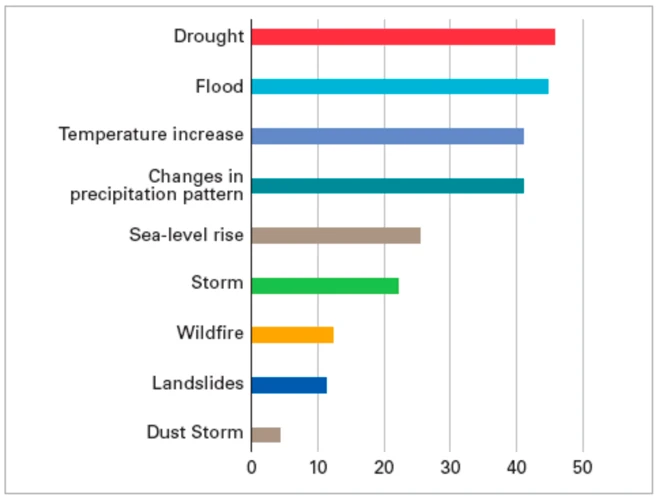
Methods of Predicting Natural Disasters
Astrological Methodology: Astrologers have long believed in the potential of planetary alignments for predicting natural disasters. They employ various techniques, such as analyzing birth charts and studying the positions and aspects of planets, to gain insights into potential disasters. Astrology enthusiasts argue that certain planetary configurations may indicate heightened risks of specific natural events, such as earthquakes or major storms. However, it is important to note that while astrology provides a unique perspective, it is considered a pseudoscience by the scientific community, and its predictive capabilities are highly debated.
Alignment Tracking Systems: In addition to astrological approaches, advancements in technology have given rise to alignment tracking systems. These systems utilize sophisticated algorithms and data analysis to monitor and interpret the positions and movements of celestial bodies. By focusing on planetary alignments and their potential impact on Earth, these systems aim to identify patterns and trends that may correlate with natural disasters. However, it is important to approach these systems with caution, as correlation does not necessarily imply causation. Further research and comprehensive data analysis are essential to validate the reliability of these tracking systems.
While astrology and alignment tracking systems offer unique approaches to predicting natural disasters, their effectiveness and accuracy are still subject to debate and scrutiny. It is essential to combine these methods with other scientific disciplines such as seismology, meteorology, and geology to obtain a holistic understanding of natural disaster prediction. By integrating diverse expertise and advancing technological capabilities, the scientific community can continue to explore innovative and precise methods for predicting and mitigating the impact of natural disasters.
1. Astrological Methodology
Astrological Methodology
Astrology has long been intertwined with the concept of planetary alignments and their potential impact on Earth. Astrologers believe that the positions and movements of celestial bodies can influence human lives and events on Earth. In the context of natural disaster prediction, astrological methodology involves analyzing the alignment of planets and their relationship to specific zodiac signs to forecast potential disasters.
Astrologers utilize birth charts, which are personalized maps of the positions of the planets at the time of an individual’s birth, as a foundational tool. They study the transits – movements of planets through the zodiac – and look for significant alignments and aspects that may indicate the potential for natural disasters. For instance, the alignment of Mars, a planet traditionally associated with energy and aggression, with Uranus, known for its disruptive influence, could be interpreted as a potential indicator of seismic activity or violent storms.
It’s important to note that the use of astrology for natural disaster prediction is highly controversial within the scientific community. Critics argue that astrological predictions lack empirical evidence and scientific rigor. Additionally, skeptics point out that astrology focuses on the subjective interpretation of symbols, leading to a lack of consistency and reliability in predictions.
While astrological methodology may have a dedicated following, it remains a topic of debate and skepticism among scientists and meteorologists. As research in this field continues, it is essential to approach astrological predictions with caution, considering them as complementary rather than definitive sources of information. Regardless, astrology’s unique perspective is undeniably fascinating, and it continues to captivate individuals who believe in the influence of planetary alignments on natural disasters.
2. Alignment Tracking Systems
Alignment Tracking Systems
Advancements in technology have paved the way for the development of alignment tracking systems, which play a crucial role in harnessing the potential predictive capabilities of planetary alignments in relation to natural disasters. These systems utilize sophisticated algorithms and data from astronomical observations to precisely calculate and predict future planetary alignments. Through the use of specialized software and astronomical databases, scientists and meteorologists can track the positions of celestial bodies and identify patterns or alignments that may have an impact on Earth.
Alignment tracking systems employ various techniques to monitor planetary alignments. One widely used approach is based on orbital predictions, where the positions of planets in their respective orbits are tracked to determine alignment patterns. By cross-referencing this data with historical records, scientists can identify recurring alignments and investigate their potential correlation with past natural disasters. This information can then be used to create models and algorithms that can forecast future alignments and assess their possible consequences.
Another approach involves the use of advanced telescopes and imaging technologies. By capturing high-resolution images of the night sky and analyzing the positions of planets over time, scientists can detect alignments and study their potential effects. These images are often processed using sophisticated image recognition software to accurately identify and track the movements of celestial bodies.
Alignment tracking systems also benefit from collaborations with global astronomical networks and space agencies. Networks of telescopes positioned around the world, along with satellites in space, work together to continuously monitor and track planetary movements. This extensive network allows for more comprehensive and accurate data collection, enhancing the capabilities of alignment tracking systems.
While alignment tracking systems have shown promise, it is important to note that the precise predictive capabilities of these systems are still being refined. The science behind the correlation between planetary alignments and natural disasters is complex, and there may be other factors at play that need to be considered. However, with continued advancements in technology and collaborative efforts, alignment tracking systems hold the potential to revolutionize disaster prediction, offering valuable insights into the role of planetary alignments in shaping Earth’s natural phenomena.
Case Studies: Planetary Alignments and Natural Disasters
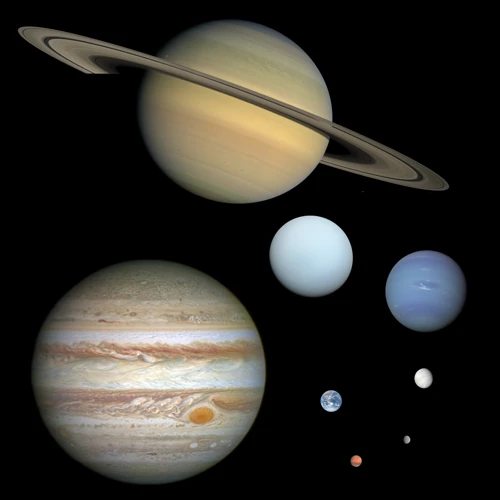
Case Studies: Planetary Alignments and Natural Disasters
1. Hurricane Katrina: In August 2005, the Gulf Coast of the United States experienced one of the deadliest and costliest natural disasters in history – Hurricane Katrina. During this time, there were notable planetary alignments, including the alignment of Venus, Mars, and Saturn. Some researchers suggest that the gravitational forces exerted by these aligned planets may have contributed to the intensification and trajectory of the hurricane, leading to the devastating effects experienced in New Orleans and surrounding areas.
2. Japan Earthquake and Tsunami: Another significant case study involves the Great East Japan Earthquake and Tsunami that occurred in March 2011. Prior to the earthquake, there was a rare alignment of Jupiter, Uranus, and Mercury. While the correlation between this alignment and the earthquake is still speculative, some experts hypothesize that the alignment’s gravitational effects may have influenced the tectonic activities in the region, potentially contributing to the seismic event and subsequent tsunami.
Examining these case studies provides a glimpse into the potential relationship between planetary alignments and natural disasters. While the scientific community continues to explore the validity and significance of these alignments, these examples highlight the need for further research and analysis to better understand the role of celestial bodies in shaping Earth’s geological and atmospheric phenomena.
1. Hurricane Katrina
One of the most devastating natural disasters in recent history, /planetary-alignments-horoscopes-zodiac/Hurricane Katrina, serves as a compelling case study in relation to planetary alignments. In August 2005, the Gulf Coast of the United States was ravaged by this Category 5 hurricane, resulting in immense loss of life and property. Interestingly, during the time leading up to Hurricane Katrina, there was a significant alignment of multiple planets, including Mars, Venus, and Saturn. While it is important to note that correlation does not equate to causation, some experts believe that the alignment of these planets exacerbated the intensity and path of the hurricane. The gravitational effects of these planetary alignments may have influenced the atmospheric conditions, leading to the formation and strengthening of the storm. However, it is crucial to approach this correlation with scientific skepticism, as numerous other factors, such as sea surface temperatures and wind patterns, also contribute to the formation and intensity of hurricanes. Nevertheless, the case of Hurricane Katrina provides an intriguing context for exploring the potential role of planetary alignments in natural disaster prediction and understanding the complex interplay between celestial bodies and earthly phenomena.
2. Japan Earthquake and Tsunami
2. Japan Earthquake and Tsunami
On March 11, 2011, Japan experienced one of the most devastating natural disasters in its history. A powerful earthquake, measuring 9.0 on the Richter scale, struck off the eastern coast of Honshu, triggering a massive tsunami that ravaged coastal communities. Thousands of lives were lost, and the destruction was immense. Interestingly, this catastrophic event occurred during a period of significant planetary alignments.
At the time of the earthquake and tsunami, there was a notable alignment between Jupiter, Uranus, and the Earth. Jupiter, known for its massive size and gravitational pull, was positioned opposite Uranus, creating a gravitational tension between these two planets. Some astronomers and researchers speculate that this alignment, combined with the Earth’s own gravitational interactions, may have contributed to the immense force and impact of the earthquake and subsequent tsunami.
It is important to note that while the alignment coincided with the disaster, it does not serve as conclusive evidence that planetary positions directly caused the event. The influence of planet alignments on Earth’s geological activity is still under investigation and subject to ongoing scientific analysis. However, the Japan earthquake and tsunami case study serves as a reminder of the potential link between planetary alignments and natural disasters, prompting further exploration and research in this field.
Understanding and analyzing such events, like the Japan earthquake and tsunami, can provide valuable insights into the complex relationship between planetary alignments and natural disasters. By studying the circumstances surrounding these catastrophic events, scientists can gain a better understanding of the potential predictors and warning signs, ultimately contributing to improved disaster preparedness and mitigation strategies for the future.
Challenges and Limitations
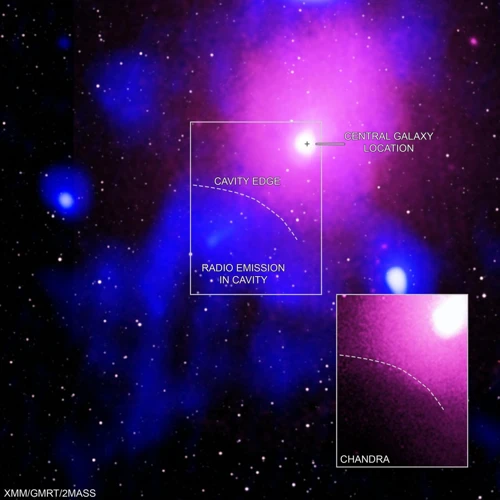
Challenges and Limitations
1. Inaccuracies and Uncertainties: One of the major challenges in using planetary alignments to predict natural disasters lies in the inherent inaccuracies and uncertainties. While the gravitational effects of planetary alignments on Earth are well-established, accurately determining the specific impact on natural disasters can be challenging. The complexities of Earth’s geological and atmospheric systems, along with the multitude of factors involved in the occurrence of natural disasters, make it difficult to isolate the sole influence of planetary alignments. Additionally, variations in the alignment timings and positions can further contribute to uncertainties in forecasting.
2. Factors beyond Planetary Alignments: It is important to acknowledge that natural disasters are not solely influenced by planetary alignments. Numerous factors, such as local environmental conditions, climate patterns, and human activities, play significant roles in the occurrence and intensity of these events. While planetary alignments may contribute to the overall dynamics, they are just one piece of the puzzle. Failing to consider these other factors could lead to incomplete or misleading predictions, highlighting the need for comprehensive and multi-faceted approaches in disaster forecasting.
3. Limited Predictive Power: Despite the fascination surrounding the potential predictive power of planetary alignments, it is crucial to emphasize that their forecasting capabilities are currently limited. The correlation between planetary alignments and natural disasters, while intriguing, is still not fully understood. The complex interplay between celestial forces and their impact on Earth’s systems requires further research and data analysis to develop accurate prediction models. Until then, relying solely on planetary alignments as a reliable means of disaster prediction is not advisable.
While acknowledging the fascination and potential behind the science of planetary alignments, these challenges and limitations serve as reminders that caution should be exercised when it comes to relying solely on this method for predicting natural disasters. Embracing a holistic approach that considers various factors, including planetary alignments, can enhance our understanding of these events and improve overall disaster preparedness.
1. Inaccuracies and Uncertainties
Inaccuracies and Uncertainties
While the concept of using planetary alignments for predicting natural disasters may hold promise, it is essential to acknowledge the inherent inaccuracies and uncertainties associated with this approach. One significant challenge is the complexity and interplay of various factors influencing natural disasters. Planetary alignments alone cannot be attributed as the sole cause of these events, as there are numerous other variables, such as weather patterns, geological conditions, and human activities, that contribute to their occurrence.
Another source of uncertainty lies in the difficulty of accurately predicting planetary alignments themselves. While advancements in technology have allowed for more precise calculations, certain factors, such as gravitational interactions between planets and other celestial bodies, can introduce unpredictable variations. Additionally, the vast distances involved and the elliptical orbits of planets mean that alignments occur relatively infrequently and often in fleeting moments, making it challenging to establish conclusive patterns.
The interpretation of the effects of planetary alignments on Earth’s systems remains a subject of debate. While some studies suggest a correlation, others argue that the observed associations may be coincidental or due to biases in data analysis. The complex nature of these interactions and the multitude of variables involved create significant uncertainties in accurately predicting the occurrence and impact of natural disasters based solely on planetary alignments.
It is important to approach the study of planetary alignments and their potential role in disaster prediction with a critical mindset. While the concept is intriguing, it is crucial to acknowledge the limitations, uncertainties, and the need for robust scientific evidence. Continued research, collaboration, and the integration of multiple data sources and methodologies will be essential in addressing these inaccuracies and uncertainties and unlocking the true potential of planetary alignments in disaster prediction.
2. Factors beyond Planetary Alignments
While planetary alignments may play a role in predicting natural disasters, it is important to recognize that there are numerous other factors that contribute to these catastrophic events. Understanding and considering these additional elements is crucial in developing a comprehensive approach to disaster prediction and mitigation. Here are some factors that go beyond planetary alignments:
1. Geographical Location: The geographical location of an area greatly influences its susceptibility to specific types of natural disasters. For example, regions located along fault lines are more prone to earthquakes, while coastal areas are at higher risk of experiencing hurricanes and tsunamis. Factors such as topography, proximity to bodies of water, and climate patterns all contribute to the likelihood and severity of natural disasters.
2. Climate Change: The impact of climate change cannot be overlooked when it comes to natural disasters. Rising global temperatures affect weather patterns, leading to increased frequency and intensity of storms, droughts, and other extreme weather events. Factors like melting glaciers, sea-level rise, and changes in ocean currents further exacerbate the risks associated with natural disasters.
3. Urbanization and Infrastructure: Rapid urbanization and the construction of critical infrastructure in vulnerable areas can exacerbate the impacts of natural disasters. Inadequate urban planning, improper land use management, and weak building codes can all increase vulnerability to disasters such as floods, landslides, and collapse of structures during earthquakes.
4. Human Activities: Many human activities contribute to the occurrence and severity of natural disasters. Deforestation, mining, and improper waste management practices can lead to soil erosion, landslides, and flash floods. Additionally, the extraction of natural resources can induce seismic activity in certain regions.
In order to develop effective disaster preparedness and response strategies, it is crucial to take into account these factors beyond planetary alignments. By considering the geographical location, impact of climate change, urbanization and infrastructure, and human activities, scientists and policymakers can work towards a more holistic understanding of natural disasters and develop strategies to mitigate their impacts.
The Future of Planetary Alignments in Disaster Prediction
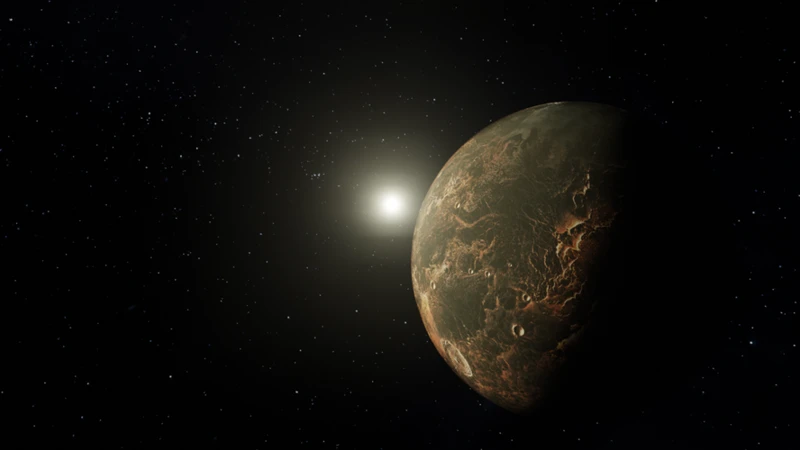
The Future of Planetary Alignments in Disaster Prediction
Advancements in Technology: As technology continues to evolve at an exponential pace, so does the potential for utilizing planetary alignments in disaster prediction. With the advent of sophisticated telescopes, satellites, and powerful computational algorithms, scientists are now able to observe, analyze, and model planetary movements with unprecedented precision. These advancements allow researchers to gather vast amounts of data regarding planetary alignments and their potential effects on Earth. By harnessing this data and employing advanced predictive models, the accuracy of disaster predictions could be significantly improved.
Collaborative Efforts and Research: The future of planetary alignments in disaster prediction lies in fostering collaboration and research partnerships across multiple scientific disciplines. Collaborative efforts between astronomers, geologists, meteorologists, and other experts are essential for gaining a comprehensive understanding of the complex interactions between planetary alignments and natural disasters. By sharing knowledge, data, and resources, researchers can combine their expertise to develop more accurate predictive models, identify early warning signs, and improve disaster preparedness strategies.
While the role of planetary alignments in disaster prediction is still a subject of ongoing research, the potential for advancement in this field holds great promise. Continued exploration and investigation into the correlation between planetary alignments and natural disasters may yield valuable insights that could ultimately save lives and mitigate damage caused by catastrophic events. However, it is important to approach this field with scientific rigor, acknowledging the limitations and uncertainties that exist, and interpreting findings based on empirical evidence rather than purely mystical associations.
By embracing the advancements in technology, fostering collaborative efforts, and conducting rigorous research, the future of planetary alignments in disaster prediction could bring us closer to a safer and more resilient world. The mysteries of the universe may hold the key to unlocking vital information about natural disasters, providing us with the tools we need to anticipate and mitigate their impact. The journey towards understanding the intricate relationship between planetary alignments and natural disasters continues, and the discoveries yet to be made could reshape the way we navigate and prepare for the unforeseen challenges that lie ahead.
1. Advancements in Technology
1. Advancements in Technology
Technology has played a pivotal role in advancing the study of planetary alignments for predicting natural disasters. Sophisticated instruments and advanced computational models have allowed scientists to gather and analyze vast amounts of data, providing valuable insights into the intricate workings of celestial bodies and their potential impact on Earth.
Satellite Technology: Satellites equipped with various sensors and instruments orbit the Earth, constantly monitoring and recording changes in the environment. These satellites can capture detailed images of the Earth’s surface, enabling scientists to study geological formations, track weather patterns, and identify potential areas prone to natural disasters. The data collected from these satellites is invaluable in analyzing the correlation between planetary alignments and catastrophic events.
Supercomputing: The processing power of supercomputers has revolutionized the field of disaster prediction. These high-performance machines can efficiently handle complex calculations and simulations, allowing scientists to model and simulate the effects of planetary alignments on Earth. By running numerous scenarios, researchers can assess the probability of natural disasters occurring during specific alignment configurations, aiding in forecasting and risk assessment.
Data Analysis and Artificial Intelligence: The abundance of data collected from various sources, including satellites, weather stations, seismic sensors, and historical records, requires advanced data analysis techniques. Artificial intelligence and machine learning algorithms can sift through massive datasets, identifying patterns and correlations that might not be evident to the human eye. These algorithms can help scientists identify potential precursor signals or anomalies associated with planetary alignments that might indicate an increased likelihood of natural disasters.
By leveraging advancements in technology, scientists are better equipped than ever before to harness the power of planetary alignments for disaster prediction. The integration of satellite technology, supercomputing, and data analysis techniques contributes to a more comprehensive understanding of the complex interactions between celestial bodies and Earth, bringing us one step closer to accurate and timely disaster forecasts.
2. Collaborative Efforts and Research
2. Collaborative Efforts and Research
Collaboration and research are key components in furthering our understanding of the role of planetary alignments in predicting natural disasters. Given the complex nature of this field, it is essential for scientists, meteorologists, and astrologers to work together and pool their expertise. Collaborative efforts allow for the combination of astronomical knowledge, meteorological data, and predictive models to better analyze and interpret the potential impacts of planetary alignments on Earth’s geophysical and atmospheric systems.
Researchers from various disciplines come together to conduct comprehensive studies that involve both theoretical analysis and empirical observations. These studies aim to establish robust methodologies for predicting natural disasters based on planetary alignments. By analyzing historical data and monitoring current events, scientists can identify patterns and correlations that may help improve predictive models.
Collaboration also extends to using advanced technologies and innovative tools. Scientists harness the power of supercomputers to simulate complex interactions between planets and Earth, enabling them to generate more accurate forecasts. Additionally, the use of satellite imagery, remote sensing, and ground-based monitoring systems provides valuable data for studying the effects of planetary alignments on weather patterns and geological activities.
Collaboration extends beyond the scientific community. Public-private partnerships and collaborations with governmental organizations are vital in accessing resources, funding, and data required for extensive research. Governments can invest in monitoring systems, infrastructure, and data-sharing platforms, facilitating the analysis and prediction of natural disasters associated with planetary alignments.
By combining the efforts of scientists, researchers, and various stakeholders, collaborative initiatives have the potential to unlock greater insights into the role of planetary alignments in predicting natural disasters. Such endeavors will contribute to the development of more accurate forecasting models, enhancing our ability to mitigate the impact of these catastrophic events and protect vulnerable communities.
Conclusion

Conclusion
In conclusion, the study of planetary alignments and their potential role in predicting natural disasters is a captivating field that combines ancient observations with modern scientific advancements. While historical records provide evidence of planetary alignments, their direct correlation with natural disasters remains a subject of ongoing research and debate. The gravitational effects exerted by aligned planets on Earth’s tides and geology, coupled with potential influences on atmospheric conditions, suggest a plausible connection to the occurrence of seismic activities and severe storms. However, the complexities of Earth’s systems, including other natural factors and the inherent uncertainties in predicting such events, pose significant challenges in accurately forecasting disasters solely based on planetary alignments. Nonetheless, with advancements in technology and collaborative research efforts, the exploration of these celestial phenomena holds promise for refining disaster prediction models and enhancing preparedness measures. As we continue to unravel the mysteries of the universe, it is crucial to approach this field with a scientific lens, allowing for rigorous analysis and critical thinking. Whether planetary alignments can indeed serve as reliable indicators of natural disasters is yet to be fully determined, but the pursuit of knowledge and the quest for a safer world continues.
Frequently Asked Questions

FAQs about Planetary Alignments and Natural Disasters
1. Can planetary alignments accurately predict natural disasters?
While there is ongoing research in this field, the current understanding of planetary alignments and their specific correlation with natural disasters is not yet definitive. However, they offer valuable insights for further investigation.
2. Are planetary alignments the only factor contributing to natural disasters?
No, natural disasters are the result of complex interactions among various factors, including geological, meteorological, and environmental conditions. Planetary alignments are just one potential component of this intricate system.
3. How can ancient observations help in understanding planetary alignments?
By studying ancient records and observations, scientists can gain insights into the patterns and occurrences of planetary alignments throughout history. This can provide a foundation for further research in understanding their potential effects.
4. What role does astrology play in planetary alignments and natural disasters?
Astrology explores the effects of celestial bodies on human behavior and events. While some astrologers believe in the connection between planetary alignments and natural disasters, the scientific community generally does not consider astrology as a reliable predictor of natural disasters.
5. Can planetary alignments be accurately tracked?
Yes, advancements in technology have enabled precise tracking of planetary movements. These measurements aid researchers in analyzing patterns of alignments and their potential effects.
6. Are there any historical records of natural disasters coinciding with planetary alignments?
Ancient texts and records describe significant events like earthquakes, volcanic eruptions, and storms occurring during certain planetary alignments. However, causality has yet to be definitively established.
7. Can planetary alignments potentially mitigate or prevent natural disasters?
At present, the understanding of planetary alignments is not advanced enough to predict or prevent natural disasters. However, continued research in this area may contribute to more accurate forecasting in the future.
8. Are there any specific planetary alignments that are linked to certain types of natural disasters?
While some studies suggest associations between specific alignments and certain types of natural disasters, no conclusive evidence has been found to establish direct causality.
9. Are there any limitations in using planetary alignments for predicting natural disasters?
Yes, there are limitations, such as the complexity of interactions within Earth’s systems, the uncertain and varying effects of different alignments, and the need for more comprehensive data and analysis.
10. How can the study of planetary alignments contribute to disaster preparedness?
While the direct predictive capabilities of planetary alignments are still being explored, studying them expands our understanding of the broader mechanisms influencing natural disasters. This knowledge can potentially aid in developing more comprehensive disaster preparedness strategies.
References
Frequently Asked Questions

FAQ 1: Can planetary alignments accurately predict natural disasters?
While planetary alignments can provide insights into potential connections with natural disasters, it is important to note that they do not guarantee accurate predictions. The science behind planetary alignments and their correlation with natural disasters is still being studied and researched.
FAQ 2: How far back do historical observations of planetary alignments go?
Historical observations of planetary alignments date back thousands of years. Ancient civilizations such as the Babylonians, Egyptians, and Greeks documented these celestial events and their potential impacts on Earth.
FAQ 3: Are there gravitational effects on Earth during planetary alignments?
Yes, planetary alignments can have gravitational effects on Earth. These gravitational interactions between celestial bodies have the potential to influence Earth’s tides, seismic activity, and other geophysical phenomena.
FAQ 4: What is the astrological methodology used in predicting natural disasters?
Astrological methodology involves analyzing the positions and movements of celestial bodies to make predictions about natural disasters. Astrologers believe that specific planetary alignments can provide insights into potential events on Earth, including natural disasters.
FAQ 5: What are alignment tracking systems?
Alignment tracking systems use sophisticated technology to monitor and track planetary alignments. These systems analyze the positions and movements of celestial bodies in real-time, allowing scientists to study their potential correlations with natural disasters.
FAQ 6: Did planetary alignments play a role in Hurricane Katrina?
While there were planetary alignments during the time of Hurricane Katrina, it is important to note that they were not the sole cause of the disaster. Hurricane formation and intensification are complex processes influenced by various meteorological factors.
While there were some planetary alignments around the time of the Japan earthquake and tsunami, it is essential to recognize that seismic activity is primarily driven by tectonic plate movements and other geological factors. Planetary alignments alone cannot provide a comprehensive explanation for such natural disasters.
FAQ 8: Can inaccuracies and uncertainties arise when using planetary alignments for disaster prediction?
Absolutely. The prediction of natural disasters is a highly complex task, and relying solely on planetary alignments can lead to inaccuracies and uncertainties. Numerous other factors contribute to the occurrence of natural disasters, making it challenging to attribute them solely to celestial events.
FAQ 9: What are some limitations of using planetary alignments in disaster prediction?
Some limitations of using planetary alignments in disaster prediction include the lack of a consistent and reliable predictive model, the difficulty in accurately measuring and interpreting celestial events, and the potential for false correlations between alignments and natural disasters.
FAQ 10: How can advancements in technology contribute to the future of planetary alignments in disaster prediction?
Advancements in technology, such as improved data collection methods, more powerful computing capabilities, and sophisticated algorithms, can enhance our understanding of planetary alignments and their potential impact on natural disasters. These advancements can lead to more accurate and reliable prediction models in the future.
References
- Do planetary alignments affect Earth’s seismic activity?
- Planetary Alignment Didn’t End the World in 1919. But One …
- The Jupiter and Saturn conjunction, through medieval …

